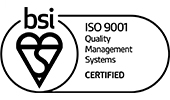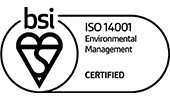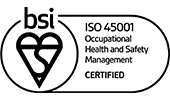As businesses prepare and analyse their phased return to the workplace, Kevin Mashford, Sales Director at Paramount, shares his views on the importance of team connections and what the human cost will be of remote working.
“A fair amount has been written in recent weeks about how COVID-19 has brought about the sudden ‘demise of the office’. As businesses stare into an economic downturn, the like of which we’ve never seen, it’s easy to see how the cost efficiencies of remote working could appeal. But, what does it mean for the workforce? Is home working really all upside?
The last couple of months have proven just how much can be achieved at distance. It seems even jobs that were considered incompatible with home working can actually be done fairly successfully. With just under half of us currently working from home (ONS, 29 May 2020), it’s hardly surprising that we’re beginning to question the status quo.
Writing in The Guardian last week, Brianne Kimmel, a Venture Capitalist from California, described the office as “a temple of assumed importance” arguing that in its current guise, it only serves to perpetuate negative and unhealthy beliefs and behaviours. There is no doubt much to be gained from a more flexible way of working, but in determining the future of the office, we must also consider what we stand to lose.
As a Workplace Design Consultancy and Fit Out Contractor, clearly we have a vested interest in understanding and indeed preserving the future of the office environment. However, we’ve always believed the workplace should be a continually evolving platform, a space that can adapt in-line with the needs of the business and its people. So, we set out to try and understand more about how those needs are likely to shift as a result of COVID-19.
We recently conducted a research study and asked our industry colleagues how they thought their future ways of working would be impacted by this period of enforced home working.
74% of respondents said they would now encourage more flexible working
Paramount, The Future Workplace Survey, May 2020
Whilst, 78% said they anticipate a reduction in physical meetings in the future

It’s clear that most people anticipate a more virtual future; a reduction in business travel, physical meetings and less time in the office.
Given the financial challenges businesses are already experiencing, it’s likely this is something many will be keen to embrace. Even those businesses who remain sceptical of the long-term sustainability of a remote workforce are likely to be tempted by the cost and time efficiencies it presents.
In the face of an economic downturn and with people already acclimatised to a virtual way of working, why wouldn’t businesses bank the savings and change the way they operate for good? Fewer meetings and less down time are good things, right?
Well, as with everything in business, it’s never that black and white. Alongside the commercial savings and the opportunity to remove some of the unreasonable or unnecessary pressures of office life, we need to consider the human cost.
What do we all stand to lose if our daily commute becomes a thing of the past and teams become largely virtual? And how will this in turn impact on productivity, efficiency and creativity within business?
There’s no substitute for physical interaction
Anyone who works in Sales will tell you that face-to-face contact is vital. Human interaction builds trust, and trust is essential in building mutually beneficial relationships that last. So, removing or restricting people’s ability to interact is likely to have a negative long-term impact on any business.
Culture is also something that’s challenging to maintain at a distance. It’s often hard to articulate and even harder to replicate, but it’s what attracts people – clients and colleagues – and it’s what makes them stay. Establishing, maintaining and demonstrating that culture is almost impossible without physical interaction. It’s often achieved through ritual and experience, and whilst technology can play its part, it can only go so far.
49% of people cited well-being and loneliness as the biggest challenge of remote working
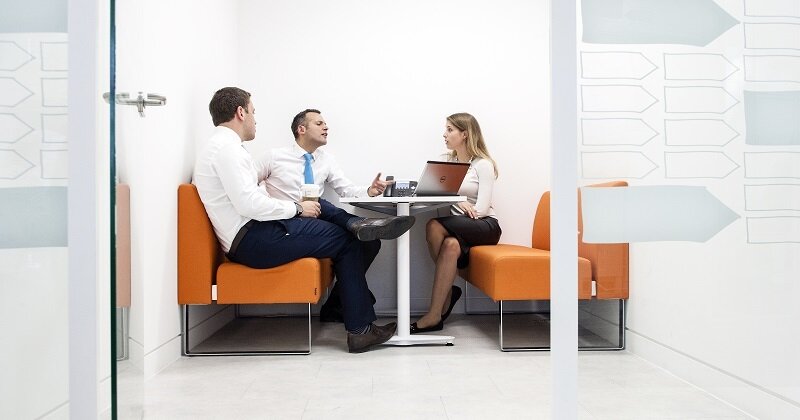
One of the most worrying human challenges however is employee well-being. Our survey found that alongside collaboration, well-being and loneliness were the biggest challenges faced by remote working employees and their managers.
For many of us, the office brings with it friendship, camaraderie and understanding. And whilst most businesses we’ve spoken to, including our own, have put regular team meetings and even socials in place to keep people connected, they are no substitute for physical interaction.
Office banter can’t be scheduled
Many of the shared experiences we cherish come about from the ‘unscheduled’. How many times has a story begun with ‘you’ll never guess what happened at work today’? It’s also in these unscheduled moments and informal conversations that great ideas are often born. Without regular contact, businesses run the risk of losing out on the creative potential of a team in sync.
The challenges for Managers are also self-evident. Without face-to-face contact, behavioural cues and body language are largely lost, making it harder to read people’s mood and their responses to situations. Managers need contact with their people to see beyond the spoken word, offer support where it’s needed and spot issues before they go too far.
What about Work/Life Balance?
It’s one of those things that’s always being discussed. We all pursue it, but few of us ever feel like we’ve truly attained it.
One of the assumed benefits of home working, is that it makes it easier for you to attain a better work/life balance. In some ways that can be true – you are literally at home and around those you love more, so time with them is increased. But that’s not to say that it’s necessarily quality time.
As technology has blurred the lines between work and home life, it has only become harder for us all to ‘switch off’. We are now technically available to our employers and clients whenever and wherever we are. It’s largely down to the individual to implement their own checks and measures to avoid this contact getting out of control.
But, if we’re all to work more from our homes, surely this will only become an even bigger issue?
40% of people cited work/life balance as one of the challenges they faced working from home

Just behind collaboration and well-being, work/life balance was the second biggest challenge for our survey respondents. Part of the challenge is that people homes simply aren’t set up for working. A home office is a luxury. From what we’ve seen and heard, many people are having to settle for the kitchen table (often shared with their home schooling kids), or even retreating to their bedrooms for some peace and quiet.
Creating physical separation is both a logistical and emotional challenge, particularly for parents. Juggling home working (well, working full stop) and home life is always anxiety-inducing for parents, but with kids at home full-time, there is a constant and very distracting pull between responsibilities which is accompanied by a somewhat inevitable sense of guilt.
What doesn’t help is that there is no clear or simple delineation between the two worlds. The daily commute, whilst for many a stressful and often sweaty experience, is at least a marker of the move from one world to another, as well as being an opportunity to gather one’s thoughts, or perhaps think of nothing at all. It’s time-out that allows us to prepare for the working day and/or decompress from the working day before we get back home.
Without it, this ‘preparation’ time is lost and if we’re not careful, time and tasks slide into one another, leaving no time to take stock. And whilst it has a very real impact on the well-being of the individual, it also has potential knock-on effects on their effectiveness and productivity.
The risk is that businesses simply see the loss of the commute as an opportunity to increase productivity. But what we must remember is the role that it played for many and help them find ways to recreate that space rather than trying to fill it with more work.
So, what does all of this mean for the future of the workplace?
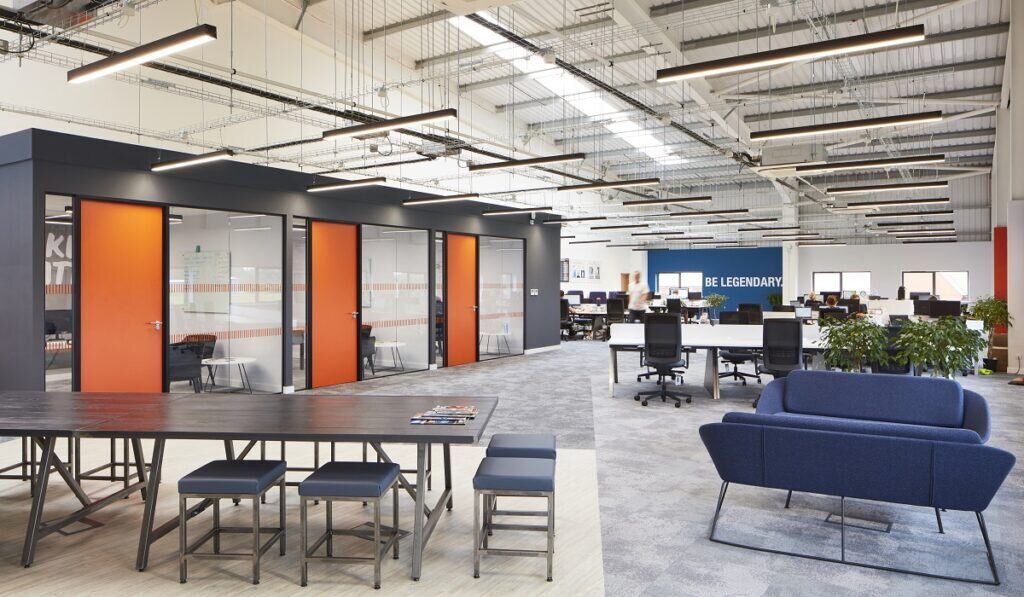
There’s really little doubt that what businesses need from their workspace will change. For us, there are four key themes emerging that are likely to underpin future design:
- A place people want to be
Above all, as the workforce decentralises, shared workspaces will need to be places that people want to be. A place they value, which offers them things they simply can’t get elsewhere. It should be a beacon of brand culture and a place you can immerse yourself in what the business is all about. A ‘concept store’ for the brand if you like. - Designed to encourage and amplify interaction
Providing space that enables human interaction will be key. Making the most of time spent together will be the order of the day, so there will be a need to rethink how the central workspace facilitates connectivity. It’s not simply better working and meeting space, but how the design can encourage interaction, provoke conversations and bring about chance meetings, in which creativity and collaboration can thrive.
If people are to visit the office rarely, we need to be sure that these visits are as fruitful as possible both for the individual and for the business. - Built around a ‘Hub and Spoke’ model
If the workforce is to be largely decentralised, then the workspace will extend far beyond the official HQ. Every home office becomes an extension of the workspace, a satellite office which must effectively link to the central hub.
Thought will therefore need to go in to how and to what extent businesses support the design, set-up and management of home office environments. At the very least, how home offices are used and the flow between them and HQ should be considered in the design of the central workspace to ensure that they operate effectively as extensions of it. - With working practices that empower the individual
Finally, and perhaps most importantly, the workforce will need help to adjust and understand how to make this new normal work for them and for their teams. They will need to be feel empowered to make the right decisions about where they work and when. To know when to stay home and when to come together to create the right outcomes both for the business and themselves.
To ensure success, any re-design of space and the research done to facilitate it, should go hand-in-hand with a root and branch review of working practices, training and development.
If you’d like to discuss our survey findings, or start to explore the future requirements of your workspace, we’d love to hear from you. Get in touch today.






